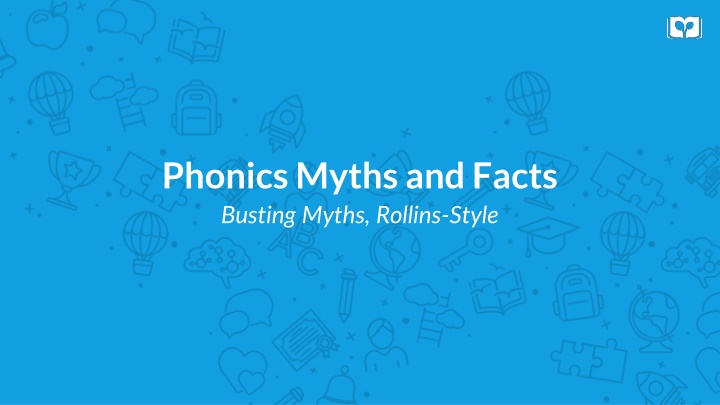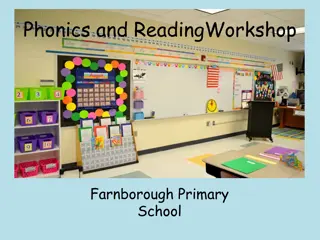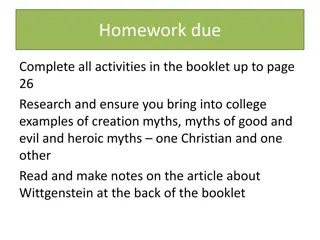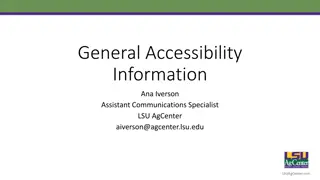Debunking Phonics Myths: A Closer Look at Reading Instruction
Debunk common myths surrounding phonics instruction with evidence-based facts. Understand the importance of explicit and systematic phonics teaching for reading proficiency and comprehension. Learn how decoding words, orthographic mapping, and rich oral language development play key roles in effective phonics instruction. Discover the benefits of teaching phonic elements in a carefully designed cumulative sequence for improved reading and writing skills.
Download Presentation

Please find below an Image/Link to download the presentation.
The content on the website is provided AS IS for your information and personal use only. It may not be sold, licensed, or shared on other websites without obtaining consent from the author.If you encounter any issues during the download, it is possible that the publisher has removed the file from their server.
You are allowed to download the files provided on this website for personal or commercial use, subject to the condition that they are used lawfully. All files are the property of their respective owners.
The content on the website is provided AS IS for your information and personal use only. It may not be sold, licensed, or shared on other websites without obtaining consent from the author.
E N D
Presentation Transcript
Phonics Myths and Facts Busting Myths, Rollins-Style
MYTH Only a few students in a typical class really need phonics.
60% of students need explicit and systematic phonics instruction to learn to read proficiently. The remaining 40% are advantaged by explicit and systematic phonics, which accelerates their growth and consolidates their learning. It s a win-win. FACT Source: Ladder of Reading Infographic by Nancy Young for the IDA
MYTH Reading comprehension takes a back seat in phonics instruction.
In order to comprehend what they read, students have to be able to decode words and store them via orthographic mapping. In good phonics instruction, reading comprehension is always the end goal. Effective phonics instruction includes attention to meaning and happens alongside rich oral language development. FACT Source: Teaching Reading is Rocket Science, 2020 by Louisa Moats
Students need reading strategies like guessing words based on the first letter and looking at the illustrations. MYTH
The three-cueing system that these practices reflect is based on a theory about reading development that was debunked decades ago. Skilled readers decode every word they read. We have to build thriving readers, not guessers. FACT Source: At a Loss for Words by Emily Hanford
Its more authentic to address phonic patterns as they arise when reading books with students. MYTH 8
Research has proven that its more effective to teach phonic elements in a carefully designed cumulative sequence. A patchwork approach will leave kids with gaps. Students who are taught systematically are better at reading and writing words and comprehending text. FACT Source: The 2000 National Reading Panel Report
MYTH Phonics is boring. 10
Learning the tools to unlock written code and become a proficient reader and writer is extremely meaningful and motivating. Good phonics instruction from a skilled teacher should be enjoyable, fun, interactive and hands-on. FACT Source: Review of the research on student engagement by Kathy Dyer on NWEA
Phonics instruction should focus only on individual words and patterns. MYTH
Phonics instruction is most effective when students apply learned skills to reading and writing connected text. FACT Source: Foundational Skills to Support Reading for Understanding from the What Works Clearinghouse
Exposure is more important than mastery. Following the pacing guide is the most important thing. MYTH
Exposure does not work. Teach to mastery instead. A curriculum is a guide not a mandate. A skilled and knowledgeable teacher will use assessment to place students on the scope and sequence and give them practice they need to master taught skills. A knowledgeable administrator will support their teachers in teaching to mastery and adapting the curriculum to student need. FACT Source: The 2000 National Reading Panel Report























